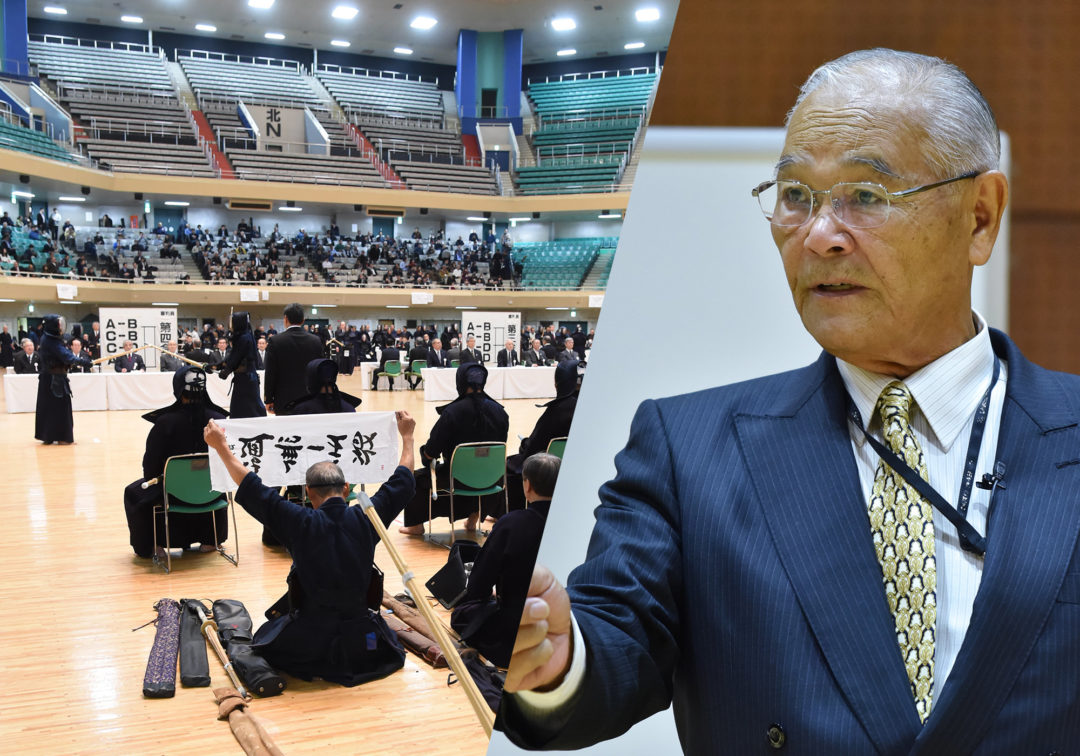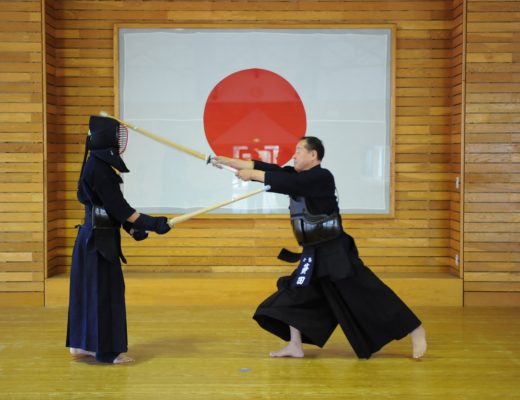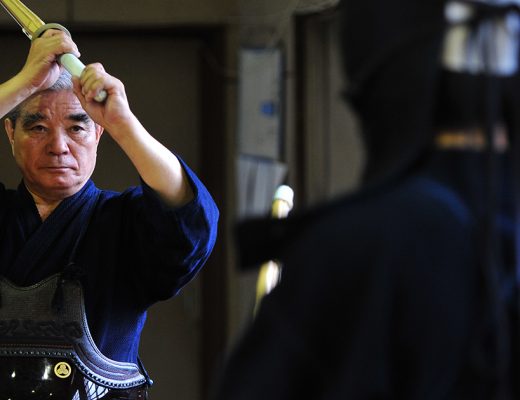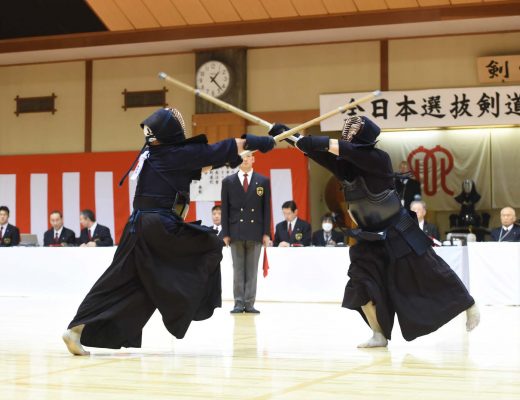2019.4 KENDOJIDAI
Kendo dan examinations require skill level and correct kendo in the training process regardless of age. In particular, the 8th dan examination is the most difficult examination with a pass rate of 0.7%.
First of all, I will review the analysis of the 8th dan examination and the reviews of the judges over the past five years from “Kenso”, a monthly magazine published by the All Japan Kendo Federation. In addition, I will examine the 8th dan examination based on the knowledge gained by judging it, and the guidance practice I gave to candidates.

Hayashi Kunio / Born in 1944 in Gifu Prefecture. Emeritus Professor of the Chukyo University, Chukyo University Kendo Club Director, 8th dan in kendo.
Keiko towards 8th dan examination
After the Kyoto tournament in May 2018, an email arrived from Mr. K, a graduate of my university, saying, “I’m preparing for my 8th dan examination but it’s not going well. Can you have a look at it sometime?” I replied: “Anytime you like”. He brought three swordsmen with him, so we practiced tachiai, keiko and kihon keiko. He asked whether they could come again, and I said yes. By invitation of Mr. K, 12 people gathered and a monthly keiko was born.
The keiko was held four times before the examination in November, including kihon keiko, tachiai, and jigeiko. 12 of them participated in the examination and 6 of them passed the first stage of the exam, and one passed the second stage. Thus, the first stage pass rate of this group was 50%. This was truly the result of our practice and training.
How did we do what? This will have a big impact on their future endeavors. It is very important how you tackle your keiko with simple advice and putting that into practice. It was not a result of the instructions, but the result of the examinees thinking and experimenting on their own to improve their performance act. It is important for the instructor to reflect and give spirit by advice and keiko. Now, I would like to explain this monthly keiko to you.
1. Tachiai keiko
The important thing about tachiai keiko is to build the body and mind beforehand. First of all, why do you practice tachiai? When you go to the exam venue, you have to prepare your body and face the exam. Therefore, it is important to create a routine that tells you how to prepare for keiko.
For example, it can be something like “I will do push-ups several times with my men on before keiko. Next, I will stretch out the Achilles muscles and do some matawari (squatting suburi). Then I take a deep breath and relax and concentrate on my spirit. This way, I will straighten out both my mind and body, then go into the tachiai and bow to the shomen.”
This way, you are creating a routine for your own practice. By doing this, you can foster an impenetrable mind by doing it the same way anytime and anywhere. Next, when should I give advice on tachiai keiko? I could explain after all participants have done their tachiai, or when one group of 4 have finished their tachiai or after every single tachiai. Explanation and advice varies depending on the number of participants. The best way is to explain one pair at a time. Because the image of the tachiai will remain in the mind only for so long. After all the tachiai is done, they will be gone. In the explanation after you witnessed it yourself, there is no video left in the brain. This is the same for both the instructor and the examinee. Therefore, it is best to explain after each tachiai. However, if there are time restrictions there is merit to explain by comparing one group of 4. In that case, it is important to explain the context at that time.
Now, for advice on the contents of the tachiai, first we will outline where the good points of the performers are. Next I will explain the points that should be corrected. It is important to always devise guidance and advice with positive thinking.
For example, I will explain; “The posture is very good. However, there is not enough seme by spirit. If that improves, your standing will increase through posture and kamae. It will become more brilliant and will resonate with the judges.
Also, if you are presented with a difficult partner, the judges will see that it is a difficult partner. The judges will notice that you made good use of difficult opponents.
The rest of this article is only available for Kendo Jidai International subscribers!






No Comments